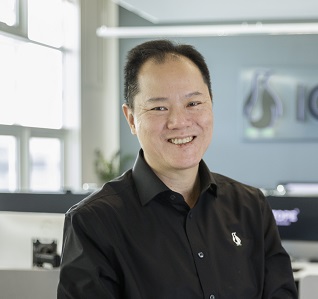By Jason Low
The recent CrowdStrike outage, which stands as the largest IT disruption in history, has reignited critical conversations around Singapore’s Digital Infrastructure Act (DIA). This outage, coupled with earlier incidents that impacted sectors like banking and healthcare, underscores the urgent need for enhanced digital infrastructure resilience. In response, a spokesperson from the Ministry of Digital Development and Information (MDDI) reiterated its commitment to introducing the DIA, which aims to enforce baseline security and resilience standards across the city-state’s digital landscape.
Singapore is already ahead of the game when it comes to sustainable data centres, announcing plans to implement the DIA following significant outages like the one at Equinix, which disrupted banking services at one of the two largest banks in the nation late last year. This outage, which halted 2.5 million payment transactions, was triggered by a technical issue with the chilled water systems, during a planned system upgrade at one of Equinix’s data centres, raising the temperature in some of the halls and affecting operations.

The DIA is designed to complement existing regulations, such as the Cybersecurity Act (CS Act), but will extend beyond cybersecurity to address a broader range of risks. These include technical misconfigurations, physical hazards like fires and water leaks, and crucially, cooling system failures.
Rising Heat On Powering Singapore’s Digital Economy
Data centres are the backbone of Singapore’s digital economy, enabling the constant flow of information and services that power businesses and society. However, protecting them from external threats is only part of the equation. These facilities must also be resilient to everyday risks, including those posed by Singapore’s unique environmental conditions. The city-state’s equatorial location results in consistently high humidity levels, which not only affect IT equipment performance but also drive up energy consumption as cooling systems work overtime to maintain optimal conditions.
The need for continuous operation in Singapore’s high-demand digital landscape further exacerbates energy usage and conversations around sustainability. Data centres here must function 24/7, requiring robust cooling systems to regulate both temperature and humidity. This constant need for cooling, particularly in a land-scarce environment like Singapore, leads to high-density operations that consume significant amounts of energy.
Precision Liquid Cooling: A Sustainable Solution
As the demand for computing power escalates, driven by advancements in technologies like artificial intelligence (AI), traditional cooling methods are proving inadequate. With the rise of technologies such as AI, GPU-based cloud infrastructure, and cryptocurrency, traditional liquid cooling methods have become unsustainable and inefficient. In 2022, NPR reported that the average data centre consumes 300,000 gallons of water daily—the equivalent of what 100,000 homes use. In resource-scarce cities like Singapore, this immense water requirement places a significant strain on local resources.
Years of collaboration between technology companies, researchers, and data centre providers have led to the development of more sustainable cooling solutions. Precision Liquid Cooling presents a cutting-edge solution – designed for cooling high-performance computing systems. It delivers exceptional thermal stability by precisely circulating dielectric fluid across the entire IT stack, effectively removing nearly 100% of the heat generated. This method significantly reduces energy consumption by up to 40% and eliminates the need for water, cutting water usage by up to 100%. Unlike traditional cooling methods, Precision Liquid Cooling eliminates performance-throttling hotspots and does away with bulky air cooling infrastructure, optimising physical space within the data centre.
Singapore’s Surprise Decision
Singapore has long been a leader in sustainability, with initiatives like closing the water loop to reuse every drop and transitioning to natural gas for power generation. Approximately 95% of the city-state’s electricity is now generated using natural gas, and the government is gradually moving towards greener energy sources. But it’s a delicate balance to thread, one between how Singapore can stay at the forefront of digitalisation and sustainability.
The result is a surprise decision from the government, who recently lifted a three-year moratorium on new data centre development. This decision was driven by the need to accommodate the growing demand for data centre capacity while balancing sustainability concerns.
The moratorium, imposed between 2019 and 2022, was a response to the rapid proliferation of energy-intensive data centres that were consuming a substantial amount of Singapore’s resources. During this period, data centre companies began exploring opportunities in nearby regions like Johor in Malaysia and Batam in Indonesia. However, with the lifting of the moratorium, Singapore is once again positioning itself as a digital hub leader, and aims of attracting significant investments from global tech giants like Google – who has earmarked $2 Billion of investments in neighbouring Malaysia. Singapore aims to provide 300 megawatts (MW) of additional capacity in the near term, with another 200MW that could be added for operators who tap green energy.
While Singapore might not have the allocated capacity to meet the load requirements of data centres of Southeast Asia according to reports, the Infocomm Media Development Authority (IMDA) has indicated the DIA road map charts a pathway for the data centre sector to innovate and pioneer solutions, not only to support Singapore’s international climate commitments, but also to help address the global challenge that countries face for data centre growth.
Conclusion
As Singapore continues to evolve, the adoption of sustainable practices in data centres will be crucial. The introduction of the DIA, coupled with advanced cooling technologies like Precision Liquid Cooling, will play a vital role in ensuring that Singapore’s data centres are not only secure but also sustainable. As the city-state navigates the challenges of a rapidly digitising economy, it must remain at the forefront of innovative solutions that safeguard its digital future while protecting the environment we live in today.
Jason Low is the Regional Head, APAC, Iceotope